Seven Next-Level Tactics for Calling Ducks
When your tried-and-true techniques aren’t turning any heads, it’s time to elevate your calling game
When your tried-and-true techniques aren’t turning any heads, it’s time to elevate your calling game

By Hampton Bourne
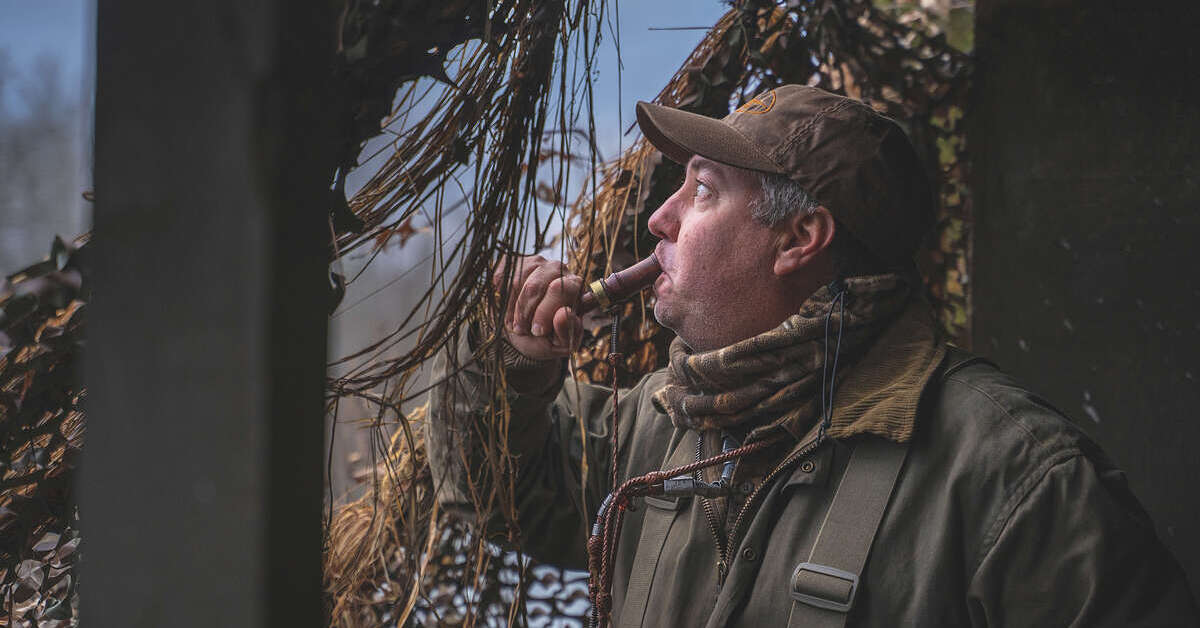
Blue skies were starting to play tricks on my mind. It was midday in a rice field, and after staring into an empty abyss for a couple of hours, I kept seeing ghosts out of the corner of my eye. I knew that a band of upcoming weather would eventually push new ducks our way, but the migration wasn’t happening yet. About the time a daydream snuck into my mind, I noticed a high group of ducks flying south. After a brief fumble with my call lanyard, I found the perfect tool for the task—a hand-me-down Johnny Marsh metal-reed call that one of my dad’s hunting partners gave me years ago. I inhaled deeply and began to call. The Marsh rang through the Missouri wind like a siren, and the bunch began to break up and descend.
There’s nothing like calling ducks. The interaction and intimate connection between caller and waterfowl can simultaneously produce satisfaction and heartbreak. When your usual attempts to coerce waterfowl seem to fall on deaf ears, having a wide range of calling techniques can greatly enhance your chances of success.
Many of us are well versed in the three or four basic duck calls that work in most hunting situations. But those calls are only the first step in effectively speaking the birds’ language. Adding new kinds of calls, techniques, and skills to your repertoire will greatly increase your efficiency in the field, especially on those days when the ducks or the weather conditions aren’t cooperating. Straight from the experts, here are seven advanced tactics that could help take your calling to the next level.
Most new hunters learn a standard feed call, but experienced callers can modify this basic technique and build upon it with the “refuge feeding call.” Buck Gardner, a champion caller and founder of Buck Gardner Calls, says, “The two most common types of feed calls are the tucka-tucka and the rolling feed call, which is more of a machine-gun version of the common feed call.”
.jpeg)
To produce the refuge feeding call, Gardner explains, you make a k sound in the back of your throat. When you do it in rapid succession and break it up with quacks, pauses, and other sounds, it sounds like a large group of ducks. “I think ducks sometimes use a feed call more aggressively to tell other ducks to mind their own business and to stay away from their food source,” he says.
“This is a super aggressive feed call that’s effective for getting the attention of ducks passing by. It’s an attention-getter,” Gardner explains. “When you’re calling as a group in these kinds of situations, everyone in the group should be doing this same call. But you can certainly scare ducks with it. You don’t want to use it as ducks are getting close. It’s not a finishing call. When ducks are in that 70- to 80-yard range, most people call too much anyway. If a duck has its wings set and is coasting into the decoys, I don’t call at all. You can’t make them come any faster.”
Call of Choice: Buck Gardner Buck Brush
Kelley Powers, a calling champion and cofounder of Power Calls and Final Flight Outfitters, uses another slight modification of a traditional feed call to make the cutdown call.
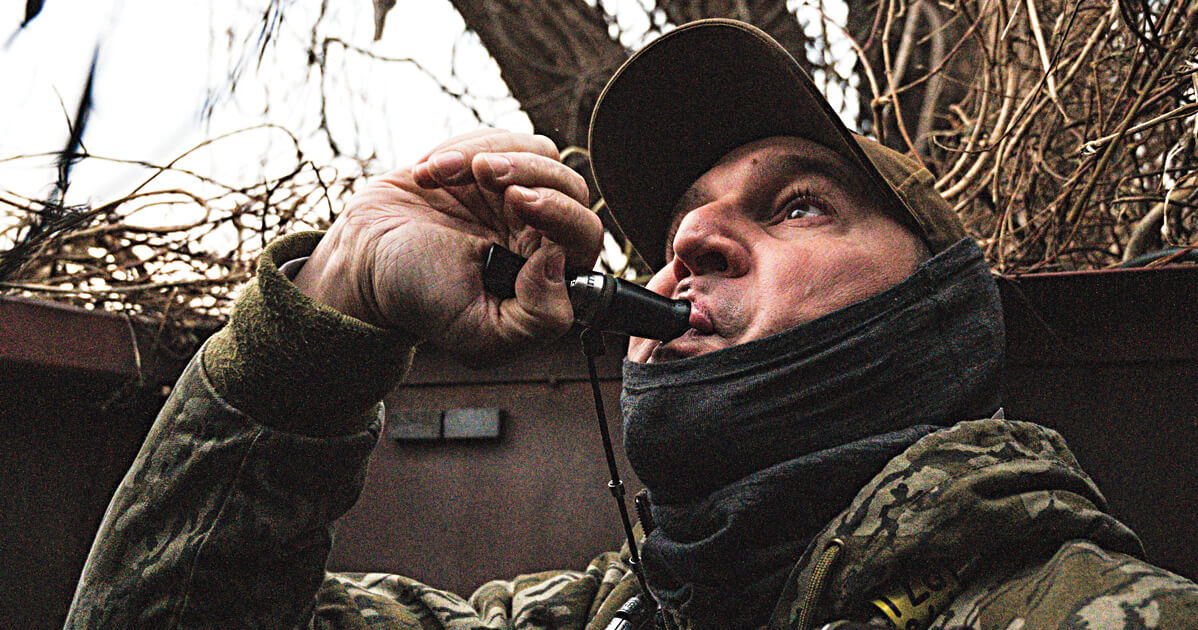
“When you watch a live dominant hen, her feed call will get louder and really aggressive as ducks get closer,” Powers says. “She’s saying, ‘I have a food source here, and we’re all competing for it.’ When properly executing the call, you present air from deep down in your chest to inflect volume and power. You want a loud, choppy, aggressive feeding call. You really have to tighten your stomach muscles to do it correctly. If you finish calling and feel like you’ve just done some sit-ups, you’re doing it right. Take a deep breath like you do when a doctor tells you to inhale deeply, and really strain to get that deep, choppy sound.
“After a migration, ducks need calories,” Powers continues. “Likewise, when it’s cold they need calories. The cutdown will be most effective if you’re hunting in a feeding area on days when ducks are actively looking for food. If you hunt in a spot with open water or on a day without much wind, it won’t be as effective. Even when ducks are finishing, it’s still a really good way to let them know there’s a food source. You can do that with other feed calls, but it’s not going to trigger that natural instinct to compete for food like the cutdown does.”
Call of Choice: Power Calls Ignition
Rod Haydel grew up in the calling business. His father, Eli, founded Haydel’s Game Calls in 1981, and Rod currently serves as the company’s president. To help coerce working ducks into his decoy spread, he uses this modification on a traditional five-note greeting call.
“When ducks feed on grain, rice in particular, they sometimes emit a hoarse squeal at the end of their notes. When you add that squeal to your greeting call, you’re telling ducks that there’s a plentiful food source present,” Haydel says.
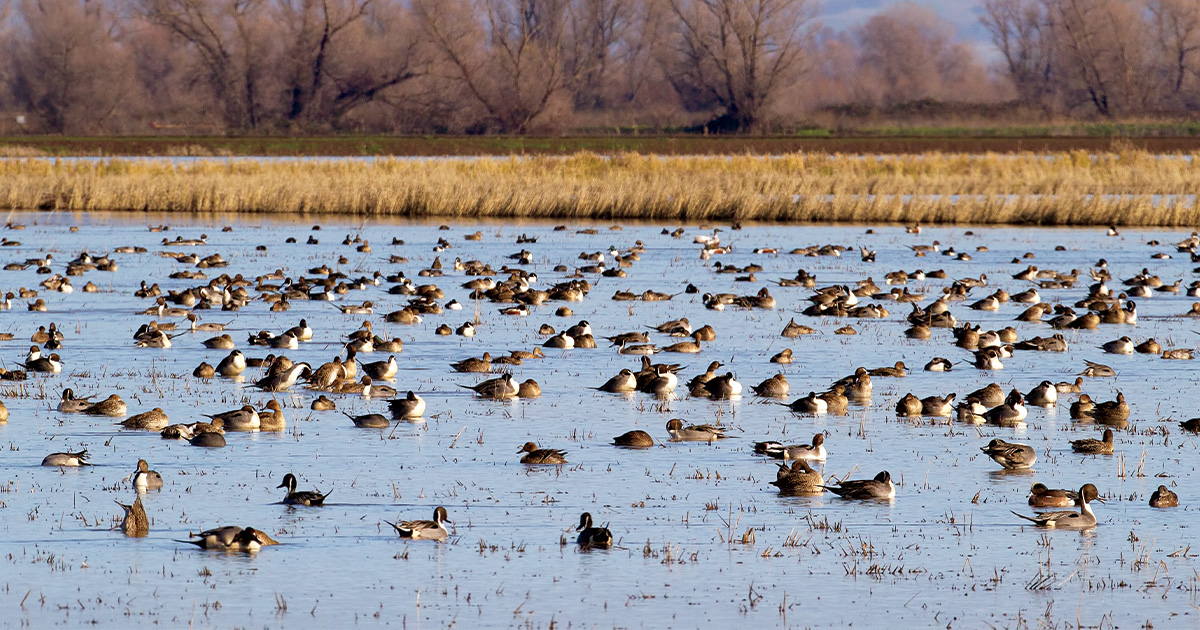
“The sound can be tough to master. Some callers will blow hot air into the call and then switch to cold air in the middle of the note. I begin a note just like a normal quack with hot air from my diaphragm, and then I blow cooler air into the call by pinching my lips down on the note,” he says. “It almost looks like I’m chewing the call. Imagine starting the note with air coming from your diaphragm and finishing with air coming out of a nearly closed mouth—almost like you’re blowing up a balloon.”
“It works great on sunny days when ducks are feeling good,” Haydel explains. “On cloudy days, when ducks are wary, I tone back my calling overall. I try to get their attention, and once I do, I just try to keep them interested. If they change their wing beats or get off track, I’ll hit them with a little greeting call. If I already have a duck’s attention, I rarely incorporate a squeal on soft quacks. I don’t want to play my best hand all at once. The call has more impact if you wait to play your ace in the hole.”
Call of Choice: Haydel’s Game Calls Dirty Rice
Callers looking to add some do-it-all nuance to their traditional greeting call should learn the bouncing hen. Not only does it add distinction and variety to a call sequence, the mechanics are a great introduction for learning how to better manipulate air through a duck call. Champion caller and call maker Fred Zink uses it on every hunt.
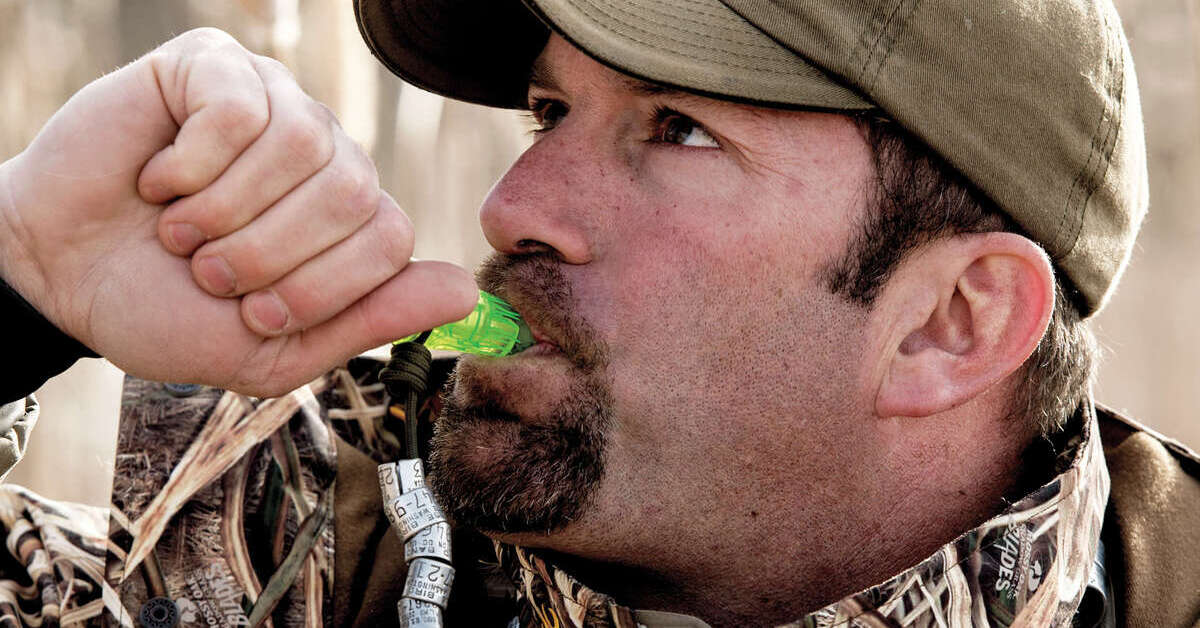
“I listen to a lot of live ducks, and this is a sound you hear a lot,” Zink says. “It’s a hen greeting call with a hiccup on the end of the notes. To make this sound, cut off the notes of your greeting call with a hard k. When I’ve heard other hunters use it, they usually finish each note with a bounce, but in real life I only hear ducks bounce their notes on the last two to three notes of a greeting call.”
“A hunter’s calling needs to vary, especially in pressured areas. I go out of my way to do things unconventionally when I’m hunting in spots that see a lot of pressure,” Zink continues. “The bouncing hen works great when you’re wanting to add some variety to what a duck hears, because you’re giving them a real duck sound that they don’t commonly get from hunters.”
“Most people call ducks like other people call ducks, not like ducks call ducks,” Zink says. “Being a good duck caller involves a lot more than just sounding like ducks. You have to act like a duck, and the bouncing hen is great for adding a little extra distinction to your calling.”
Call of Choice: Zink Calls Green Top Rocker
Todd Heidelbauer has been crafting custom calls since he took the helm of his grandfather’s boutique call business in 1995. He offers this advice for days when ducks are shy.
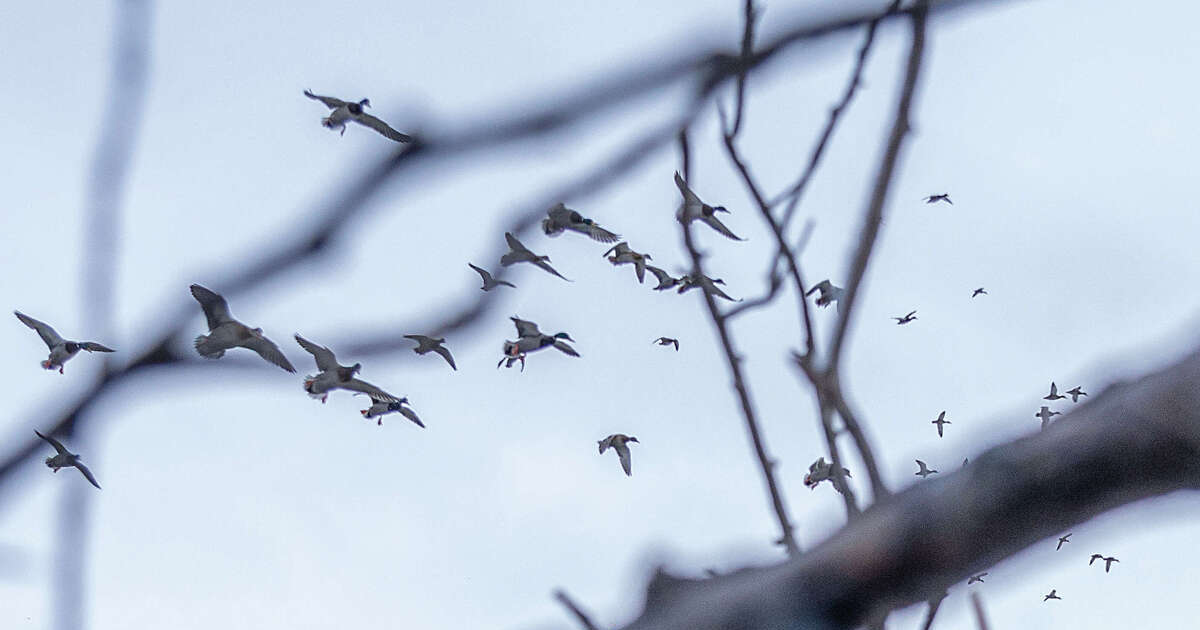
“A soft quack is a series of single, spaced-out quacks that works great on days when you don’t want to overpower a duck,” Heidelbauer says. “It is most effective on cloudy days or days without a lot of wind. It’s also very effective later in the season, when birds can be call-shy. The key is to use a much slower cadence with a deeper pitch. Instead of grunting, like you would with a regular hen call, introduce the rasp by vibrating your vocal cords at the back of your throat. While it isn’t difficult to make the sound, it is difficult to maintain continuity from one quack to the next. Volume and pitch are the most important focal points, and it takes practice to maintain consistent pitch when volume and air pressure are reduced.”
“It’s one of my finishing calls because as the birds get closer I don’t want to blast them with a louder call, but I still want to keep them on a line,” he says. “I also mix it into my full calling routine to sound like multiple ducks and create realism without trying to ‘power’ ducks into the decoy spread. I use it in some form or fashion every time I hunt.”
Call of Choice: Heidelbauer Mallard Toller
World champion caller Rick Dunn has been making duck calls since 1975. When hunting passing ducks, the Echo Calls founder suggests power-calling with several hunters.
“A lot of times when you’re hunting in open areas or even in timber, ducks don’t pay a lot of attention to one caller. Sometimes you need multiple callers screaming at the ducks to get their attention,” Dunn says. “If you have four or five good callers that can blow loudly with good control, it can turn a potentially bad hunt into a good one.”
“For passing ducks or ducks that wouldn’t normally land in your hole, team up with your partners to make a chorus of loud, low-tone hail calls,” Dunn explains. “It will also work on migrating ducks if they aren’t too high. You don’t want the high note to ring like the top end of a highball, and it can be really tough to blow loudly enough without ringing the note. You need to blow hard, hot air from your diaphragm instead of blowing through your cheeks. If you do it right, the group of hunters sounds like a lot of ducks and can be heard from three-quarters of a mile away.”
“It works best on clear days,” Dunn continues, “but you want to avoid overcalling. If ducks are already using your spot, it could be ineffective and even scare ducks away. If you do break down a passing group of ducks, back off the power and the number of callers once they start heading your way.”
Call of Choice: Echo Calls Breaker

Howard Harlan is a walking encyclopedia of hunting history, and the lifelong collector and call maker knows a thing or two about how to use the highball call.
“Most call makers today make very versatile products with plastic reeds,” Harlan says. “While those can be your workhorse calls, nothing reaches high ducks like metal-reed calls. When tuned properly, metal reeds will ring at a higher pitch than plastic reeds. In fact, I think they will ring at a pitch that we can’t even hear—much like a dog whistle. That makes metal-reed calls perfect for the Reelfoot highball.”
“The call sequence features one overly long blast followed by progressively shorter ones until you run out of breath,” he explains. “If you do it properly, you should end with a gasp. The barrels on metal-reed calls are bigger, and a metal reed is much stiffer than a plastic reed. It takes a lot more air to reach that ringing frequency.”
“If you’re properly making the sound, it won’t sound like a duck. There is very little rasp, and it will ring like a tuning fork,” Harlan explains. “It definitely isn’t a subtle technique, but it’s perfect for migration days and clear, cold days when ducks are flying high. You will scare low ducks with it, but it will reach ducks in the ionosphere. All you’re trying to do is make high ducks turn their heads and attract their eyes to your decoy spread when they’re cold and looking for company.”
Call of Choice: Johnny Marsh Metal Reed
Ducks Unlimited uses cookies to enhance your browsing experience, optimize site functionality, analyze traffic, and deliver personalized advertising through third parties. By continuing to use this site, you agree to our use of cookies. View Privacy Policy